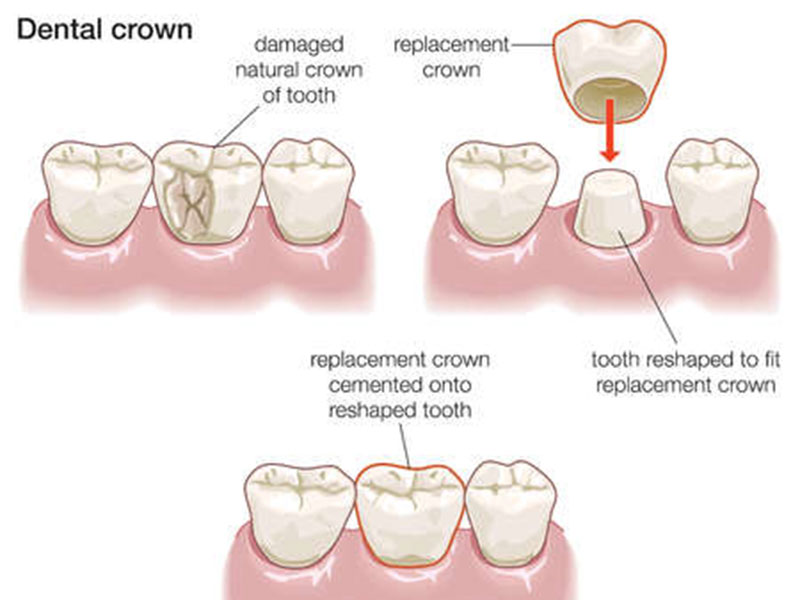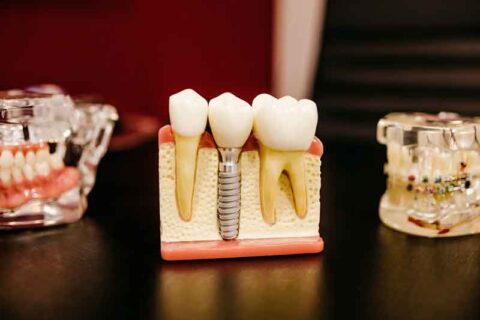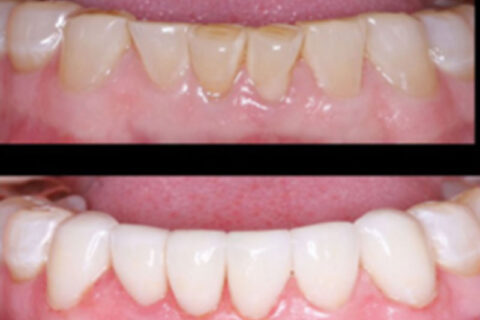Crown & Bridges: Everything You Need to Know
What Is a Crown?
A crown- often referred to as a “cap” – is a tooth-like covering placed over a carefully prepared existing tooth. Used to strengthen, restore or improve the appearance of your natural tooth, a crown is placed on an individual tooth much like a thimble over your finger. In addition to being used to strengthen a tooth to accommodate the attachment of a fixed bridge, crowns serve many functions. The most common is to support the tooth when there is no longer sufficient tooth structure left to place a filling. Crowns may also be used to protect the structure of a tooth that is fractured or broken.

Types of Crowns:
- Porcelain fused-to-metal crowns – Full Ceramic Crowns
- Full Gold Crowns
- Partial Coverage Gold or Ceramic Crowns
What Is a Bridge and Why Are Crowns Involved?
A bridge is a custom device anchored to neighboring teeth that replaces on or more missing teeth. When a lost tooth is replaced with a bridge, the teeth on either side of the missing one must be carefully prepared to serve as anchors (abutments) to hold the prosthetic replaced teeth in place. The type of crown and bridge materials used depends on:
- Aesthetics: color match and appearanceForm
- The contour of the bridge must conform to the surrounding tissue in a natural healthy position
- Function: chewing and biting accuracy
Why Is a Crown and Bridge Treatment Necessary?
Losing a permanent tooth- whether it be due to dental decay, periodontal (gum) disease) injury or accident- can cause many serious problems for your neighboring teeth. Since the support and chewing forces are altered, the remaining teeth may beginning to shift.
The opposing tooth above or below the lost tooth can begin to move up or down and out of the socket, which can accelerate gum disease and further break down the bone structure. If the missing tooth is not replaced, more teeth may eventually be lost due to improved forces exerted during chewing.
A bridge may be recommended if you’re missing one or more teeth. Gaps left by missing teeth eventually cause the remaining teeth to rotate or shift into the empty spaces, resulting in a bad bite. The imbalance caused by missing teeth can also lead to gum disease. Bridges are commonly used to replace one or more missing teeth. They span the space where the teeth are missing. Bridges are cemented to the natural teeth or implants surrounding the empty space. These teeth, called abutments, serve as anchors for the bridge. A replacement tooth, is attached to the crowns that cover the abutments. As with crowns, you have a choice of materials for bridges. Your dentist can help you decide which to use, based on the location of the missing tooth (or teeth), its function, aesthetic considerations and cost. Porcelain or ceramic bridges can be matched to the color of your natural teeth.
For more information please schedule a consultation with Dr. A.J. Peretz by calling Georgetown Smile at 202-333-0003.


